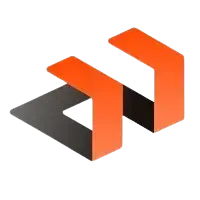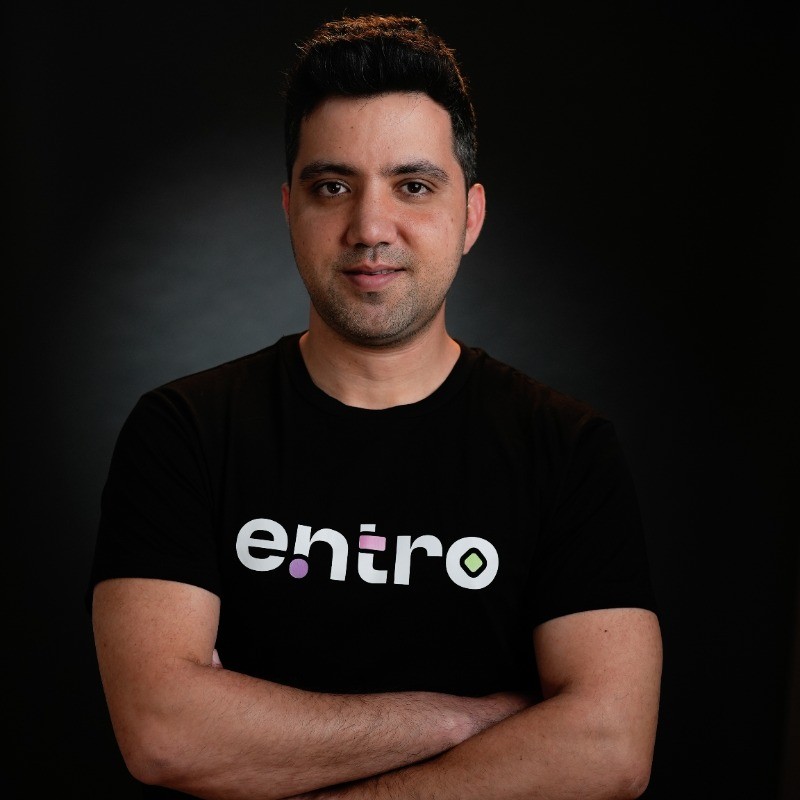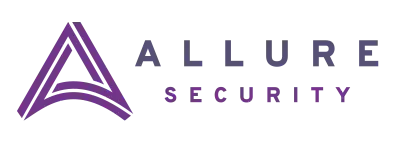Ready to build your own Founder-Led Growth engine? Book a Strategy Call
Frontlines.io | Where B2B Founders Talk GTM.
Strategic Communications Advisory For Visionary Founders
Actionable
Takeaways
Prioritize Leadership Skills from Diverse Experiences:
Ian’s unique background in the military and various cybersecurity roles underscores the value of diverse experiences in shaping effective leadership in tech startups. Founders can benefit from leveraging lessons learned in seemingly unrelated fields to enhance decision-making and team management.
Develop Solutions That Address Real Pain Points:
Ian emphasized the importance of creating solutions that address genuine industry problems rather than theoretical issues. This approach ensures that the product meets critical needs and enhances its market acceptance and viability.
Integrate Customer Feedback Early and Often:
Gomboc's development was heavily influenced by Ian's engagement with potential users during the early stages, illustrating the benefits of incorporating user feedback to refine product offerings continually. This strategy not only improves the product but also builds a customer base that feels invested in the solution.
Focus on Automating Repetitive Tasks:
By automating cloud security remediation, Gomboc addresses a significant pain point—freeing up valuable engineering resources from routine tasks. Startups should consider how automation can be applied within their niche to solve common, time-consuming problems more efficiently.
Educate the Market to Shape Perception:
Since Gomboc operates in a relatively new category, a major part of Ian's strategy involves educating potential clients and the broader market about the importance of automated remediation in cloud security. Founders should consider similar approaches when entering or creating new market categories to ensure their innovations are both understood and valued.
Conversation
Highlights
From Security Executive to Founder: How Real-World Pain Points Shape Better GTM Strategies
Most cybersecurity startups begin with a technical solution searching for a problem. In a recent episode of Category Visionaries, Ian Amit shared a different path: building Gomboc from the perspective of someone who lived through the pain points firsthand.
“My career is essentially the story of stepping up the ladder one step at a time, building a lot of experiences and learning from the field,” Ian explains, describing his journey from pentester to CISO. This progression wasn’t just career advancement – it was accumulating insights that would later shape his approach to building and marketing a security product.
The Reality Check: A Year to First Customer
While many founders rush to market with minimal viable products, Ian took a different approach. “This is not your typical ‘oh, let’s build a security product that’s a single pane of glass,'” he shares. “This is actual deep tech where we’ve had to build AI algorithms that did not exist before, they only existed in the academic world.”
This commitment to solving fundamental problems rather than creating surface-level solutions meant a longer path to market. “It took a year. It took even a little over a year,” Ian admits about landing their first paying customer. This timeline might seem slow in an industry that celebrates rapid deployment, but it reflects a deeper truth about building transformative security solutions: sometimes, doing it right takes longer than doing it fast.
Marketing Philosophy: The Anti-Spam Approach
Perhaps the most striking aspect of Gomboc’s go-to-market strategy is how it’s shaped by Ian’s experience on the receiving end of security vendor marketing. “In one word, painful,” he describes his experience as a CISO dealing with vendor outreach. This firsthand experience led to what he calls an “in your face realistic” marketing approach.
Instead of the common spray-and-pray tactics, Ian’s team focuses on understanding prospect contexts before engagement. When challenged about this targeted approach versus traditional high-volume strategies, he offers a compelling counter-argument: “You’re right. This is a numbers game. And if you aim correctly and you do your homework, you’re going to get a much higher hit rate for the shots that you do take versus just spamming the entire world.”
The Power of Market Category Creation
One of the most interesting aspects of Gomboc’s journey is their approach to market category definition. “We don’t necessarily have a defined market category,” Ian explains. While this might seem like a challenge, it’s actually an opportunity. By focusing on cloud security remediation, they’re helping to define a new category that addresses a critical gap in the market.
This category creation approach isn’t just marketing – it’s tied directly to customer pain points. “I do not want any more detection,” Ian quotes his peers saying. “This is becoming a liability for me to know more about the issues that I have in my environment.”
The Critical Go-to-Market Decision
When asked about his most important go-to-market decision, Ian’s answer reveals a sophisticated understanding of B2B dynamics: “It is defining our target audience as the security leaders.” This might seem obvious, but it’s more nuanced than it appears. While their product delivers code-level solutions that DevOps teams implement, the decision to target security leaders acknowledges where the real pain point and buying power intersect.
Looking Beyond Security
Ian’s vision extends beyond just security fixes. “What we’re doing is essentially taking away a lot of the toil and the grunt work that engineers are doing when they’re building and maintaining their cloud environment,” he explains. This broader vision suggests a path to expansion that stays true to their core value proposition while addressing adjacent problems.
For founders building in the security space, Ian’s journey offers valuable lessons about the power of experienced-based product development, thoughtful go-to-market strategies, and the importance of solving fundamental problems rather than chasing quick wins. Sometimes, the best way to disrupt an industry is to first understand it deeply from the inside.
Recommended Founder
Interviews

Aurelie Guerrieri
Chief Marketing & Alliances Officer of DataDome
Aurelie Guerrieri, Chief Marketing & Alliances Officer at DataDome: 20 Years in Silicon Valley – Insights on the Evolving Tech Landscape


Scott McCrady
CEO of SolCyber
Scott McCrady, CEO of SolCyber: $20 Million Raised to Build the Future of Managed Security


Philippe Humeau
CEO of CrowdSec
Philippe Humeau, CEO of CrowdSec: $21 Million Raised to Build the Future of Cyber Threat Intelligence


Ben Kliger
CEO and Co-Founder of Zenity
Ben Kliger, CEO and Co-Founder of Zenity: $21.5 Million Raised to Build the Future of Security and Governance for AI, Low-Code, and No-Code Development


Paul Lewis
Founder and CEO of Calamu
Paul Lewis, CEO of Calamu: $20 Million Raised to Build the Cyber Storage Category

Amit Gupta
Senior Director of Marketing Operations of Fortanix
Why Marketing Ops Should Be Your First GTM Hire


Ori Eisen
CEO & Founder of Trusona
Ori Eisen, CEO & Founder of Trusona: $38 Million Raised to Power the Future of Account Takeover Prevention


Ryan Lasmaili
CEO & Co-Founder of Vaultree
Ryan Lasmaili, CEO of Vaultree: $16 Million Raised to Build the World’s First Fully Functional Data-in-Use Encryption


Matteo Bogana
CEO and Co-Founder of Cleafy
Matteo Bogana, CEO & Co-Founder of Cleafy: $12 Million Raised to Build the Future of Online Fraud Prevention


David Brumley
CEO of Mayhem
David Brumley, CEO of Mayhem: $38 Million Raised to Build the Future of Security Testing


Nadav Arbel
CEO & Co-Founder of Cyrebro
Nadav Arbel, CEO & Co-Founder of Cyrebro: $51 Million Raised to Build the Future of ML-Backed MDR


Lisa O’Reilly
Vice President of Marketing of iVerify
How iVerify’s First Marketing Hire Built a Research-Driven Engine

Peter Dvorak
Founder & CEO of Wultra
How Wultra built category leadership as the only post-quantum provider for banking digital identity | Peter Dvorak


Sivan Tehila
Founder and CEO of Onyxia
Sivan Tehila, Founder and CEO of Onyxia: $5 Million Raised to Build the Future of Cybersecurity Performance Management


Eddie DeCurtis
Co-Founder and CEO of Shush
How Shush differentiated against competitors by solving business operations, not just deploying technology | Eddie DeCurtis, Co-Founder & CEO of Shush Inc.


Jason Martin
Co-Founder and Co-CEO of Permiso Security
Jason Martin, Co-Founder and Co-CEO of Permiso Security: $10 Million Raised to Build the Future of Cloud Security


Spencer Thompson
CEO and Co-Founder of Prelude
Spencer Thompson, CEO and Co-Founder of Prelude: Over $30 Million Raised to Build the Future of Continuous Security Testing


Dimitri Sirota
CEO & Co-Founder of BigID
Dimitri Sirota: The GTM Story of BigID ($1.25 Billion Valuation)


Michael Assraf
CEO & Founder of Flamingo
How Flamingo generated 1,000 waitlist signups before launching a product using a free community tool | Michael Assraf

Robert Cowart
CEO & Co-Founder of ElastiFlow
Robert Cowart, CEO & Co-Founder of ElastiFlow: $8 Million Raised to Power the Future of Network Performance and Security Analytics


Kyle Hanslovan
CEO & Co-Founder of Huntress
Kyle Hanslovan, CEO of Huntress: $160 Million Raised to Build the Future of Managed Security


Austin Gadient
CTO & Co-Founder of Vali Cyber
Austin Gadient, CTO & Co-Founder of Vali Cyber: $15 Million Raised to Build the Future of Linux Security


Adam Cecchetti
CEO & Co-Founder of Staris AI
Adam Cecchetti, CEO & Co-Founder of Staris AI: $5.7 Million Raised to Build Total Context Security for Application Protection


Mike Janke
Co-Founder of Data Tribe
Funding the Future: Mike Janke, Co-Founder of Data Tribe


Stephen de Vries
CEO and Co-Founder of IriusRisk
Stephen de Vries, CEO and Co-Founder of IriusRisk: $40 Million Raised to Build the Future of Threat Modeling


Kyle Hanslovan
CEO & Co-Founder of Huntress
What happens when you outgrow your messaging? w/ Huntress CEO Kyle Hanslovan


Dan Lowden
CMO of Blackbird.AI
How to Create a Category: Dan Lowden’s 8-Exit CMO Playbook


Stijn Vande Casteele
Founder of Sweepatic
Stijn Vande Casteele, Founder of Sweepatic: $4.4 Million Raised to Build the Future of External Attack Surface Management


Alan LeFort
CEO of StrongestLayer
How StrongestLayer achieved 85% meeting-to-POC and 100% POC-to-win rates using transparent one-week pilots | Alan LeFort


Danny Lopez
CEO of Glasswall
Danny Lopez CEO of Glasswall: $60+ Million Raised to Make the Content Disarm and Reconstruction (CDR) Category Mainstream


John Milburn
CEO of Clear Skye
John Milburn, CEO of Clear Skye: More Than $20 Million Raised to Build the Future of Identity and Access Governance

Tony Scott
CEO & President of Intrusion
How the ex-White House CIO turned around a failing cybersecurity company by fixing the product first | Tony Scott

Rohan Sathe
Co-Founder & CEO of Nightfall AI
How Nightfall AI uses CISO dinners to generate pipeline | Rohan Sathe


Bill Moore
CEO and Founder of XONA
Bill Moore, CEO and Founder of XONA: $30 Million Raised to Build the Future of OT User Access


Dave Mor
CEO and Co-Founder of OneLayer
Dave Mor, CEO and Co-Founder of OneLayer: $15 Million Raised to Protect Private Cellular Networks


Marina Segal
CEO and Co-Founder of Tamnoon
Marina Segal, CEO & Co-Founder of Tamnoon: Over $5 Million Raised to Build the Future of Cloud Security


Ani Chaudhuri
CEO & Co-Founder of Dasera
Ani Chaudhuri, CEO & Co-Founder of Dasera: $21 Million Raised to Build the Future of Data Security

Tom Jermoluk
CEO of Beyond Identity
Tom “TJ” Jermoluk, CEO of Beyond Identity: $200 Million Raised to Build the Future of Multi-Factor Authentication


Ken Bagnall
CEO & Founder of Silent Push
Ken Bagnall, CEO & Founder of Silent Push: $22 Million Raised to Transform Threat Intelligence Through Adversary Infrastructure Monitoring


Tom Tovar
CEO and Co-Founder of AppDome
Tom Tovar, CEO of AppDome: Over $26 Million Raised to Build the Future of Mobile App Security


Umaimah Khan
CEO and Co-Founder of Opal Security
Umaimah Khan, CEO & Co-Founder of Opal Security: $32 Million Raised to Build the Future of Identity Security


Edward Wu
CEO and Founder of Dropzone AI
Edward Wu, CEO & Founder of Dropzone AI: $20 Million Raised to Build the Future of AI SOC Analysts


Jean Le Bouthillier
CEO of Qohash
Jean Le Bouthillier, CEO of Qohash: $20 Million Raised to Build the Future of Data Security

Russell Spitler
CEO & Co-Founder of Nudge Security
Russell Spitler, CEO & Co-Founder of Nudge Security: $17 Million Raised to Build the Future of SaaS Security

Joshua Motta
CEO & Co-Founder of Coalition
Joshua Motta: How Coalition Created the “Active Insurance” Category ($5B Valuation)


Mykolas Rambus
CEO & Co-Founder of Hush
Mykolas Rambus, CEO & Co-Founder of Hush: $7.5 Million Raised to Build the Future of Data Privacy


Jessica Pratt
Director of Marketing and Communications of Peak Metrics
How PeakMetrics Turns Product Data Into Marketing Gold


Arjun Bhatnagar
CEO & Co-Founder of Cloaked
Arjun Bhatnagar, CEO of Cloaked: $25 Million Raised to Build the Future of Data Privacy


Matthew Howard
SVP & CMO of Virtru
How to Time Analyst Relations for Maximum Category Impact


Rodrigo Leme
Marketing Director of Right-Hand Cybersecurity
Rodrigo Leme, Marketing Director at Right-Hand Cybersecurity: Standing Out in a Crowded Market – Niche Targeting and Customer-Centric Approach


Colby Proffitt
VP of Marketing of Shift5
From the Pentagon to B2B: Colby Proffitt’s Journey and ABM Insights


Harley Sugarman
Founder & CEO of Anagram
Harley Sugarman, Founder & CEO of Anagram: $10 Million Raised to Transform Human-Driven Security

Mollie Breen
CEO and Co-Founder of Perygee
Mollie Breen, CEO and Co-Founder of Perygee: $6.4 Million Raised to Build the Future of IT/OT Security

Tony Lombardo
VP of Marketing of ThreatModeler Software
Why 99% of Cybersecurity Marketers Are Doing Demand Gen Wrong

Itzik Alvas
CEO & Co-Founder of Entro Security
Itzik Alvas, CEO & Co-Founder of Entro Security: $24 Million Raised to Build the Future of Non-Human Identity Management


Josh Shaul
CEO of Allure Security
Josh Shaul, CEO of Allure Security: $6 Million Raised to Help Businesses Win the Battle Against Online Scammers


Oren Kaniel
CEO & Co-Founder of AppsFlyer
Oren Kaniel: The GTM Story of AppsFlyer ($2 Billion Valuation)


Ben Levine
Senior Director of Product Management and Marketing of Axiado Corporation
Building Marketing Guidelines That Actually Stick Across Teams


Neil Serebryany
CEO and Co-Founder of CalypsoAI
Neil Serebryany, CEO & Co-Founder of CalypsoAI: $38 Million Raised to Power the Future of AI Security

Ayal Yogev
CEO and Co-Founder of Anjuna
Ayal Yogev, CEO and Co-Founder of Anjuna: $42 Million to Build The Future of Confidential Computing


Carole Winqwist
CMO of GitGuardian
How to Win with Rapid Response: GitGuardian’s Media Playbook


David Etue
CEO of Nisos
David Etue, CEO of Nisos: $33 Million Raised to Build the Future of Managed Intelligence


Peter Prizio Jr
CEO of SnapAttack
Peter Prizio Jr, CEO of SnapAttack: $8 Million Raised to Power the Future of Threat Management


Bob Tinker
CEO & Co-Founder of BlueRock
How BlueRock identified three distinct buyer personas by asking “How would you describe what we do to your peers?” | Bob Tinker


Tom Jermoluk
CEO of Beyond Identity
Tom “TJ” Jermoluk: The GTM Storyteller of Beyond Identity ($1.1 Billion Valuation)

Sebastian Stranieri
CEO & Founder of VU Security
Sebastian Stranieri, CEO & Founder of VU Security: $24 Million Raised to Build the Future of Digital Identity & Fraud Prevention


Justin Beals
CEO, Co-Founder of Strike Graph
Justin Beals, CEO of Strike Graph: $12 Million Raised to Build the Future of Automated Security and Compliance


Michael Assraf
CEO & Co-Founder of Vicarius
Michael Assraf, CEO of Vicarius: $29 Million Raised to Build the Future of Vulnerability Prioritization

Julie Preiss
Chief Marketing Officer of Centripetal
Why Your Cybersecurity Brand Sounds Like Everyone Else


Tiffany Ricks
CEO and Founder of HacWare
Tiffany Ricks, CEO and Founder of HacWare: $2.6 Million Raised to Build the Future of Security Awareness


Joe Levy
CEO of Sophos
Joe Levy, CEO of Sophos: $1.5 Billion ARR and the Future of Cybersecurity at Scale


Paul Valente
CEO and Co-Founder of VISO Trust
Paul Valente, CEO and Co-Founder of VISO Trust: $17 Million Raised to Build the Future of Third-Party Cyber Risk Management


Arie Zilberstein
CEO and Co-Founder of Gem Security
Arie Zilberstein, CEO and Co-Founder of Gem Security: $34 Million Raised to Power the Future of Cloud Detection and Response


Dimitri Sirota
CEO & Co-Founder of BigID
Dimitri Sirota: The GTM Story of BigID ($1.25 Billion Valuation)


Diana Rabba
Head of Marketing of Exein
Long Game Marketing: Building Trust in High-Stakes B2B Sales


Christian Almenar
CEO & Co-Founder of Monad
Christian Almenar, CEO of Monad: $19 Million Raised to Solve the Cybersecurity Big Data Problem


Dan Lorenc
CEO & Founder of Chainguard
Dan Lorenc, CEO & Founder of Chainguard: $250 Million Raised to Power the Future of Software Supply Chain Security


Ryan Schonfeld
Founder & CEO of Hivewatch
Ryan Schonfeld, CEO of Hivewatch: $25 Million Raised to Build the OS of Physical Security


Eric Olden
CEO and Founder of Strata Identity
Eric Olden, CEO and Founder of Strata Identity: $42 Million Raised to Build the Identity Orchestration Category


Pukar Hamal
CEO and Founder of SecurityPal
Pukar Hamal, CEO and Founder of SecurityPal: $21 Million Raised to Power the Future of Customer Assurance



